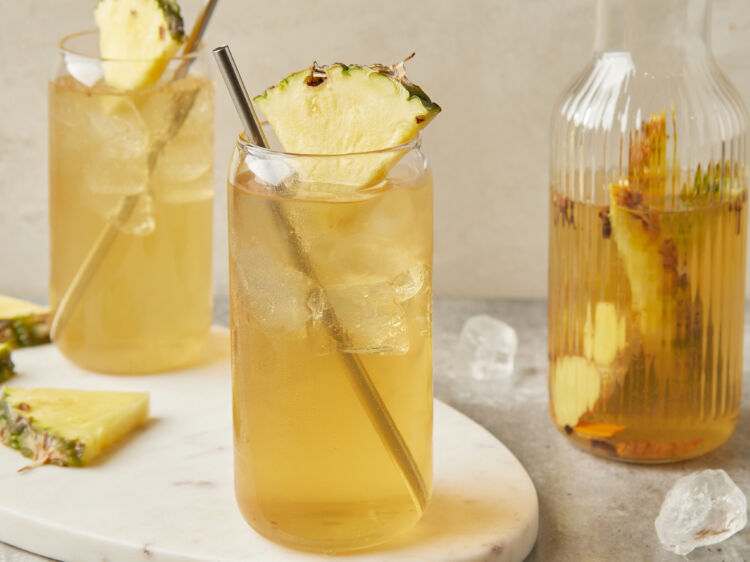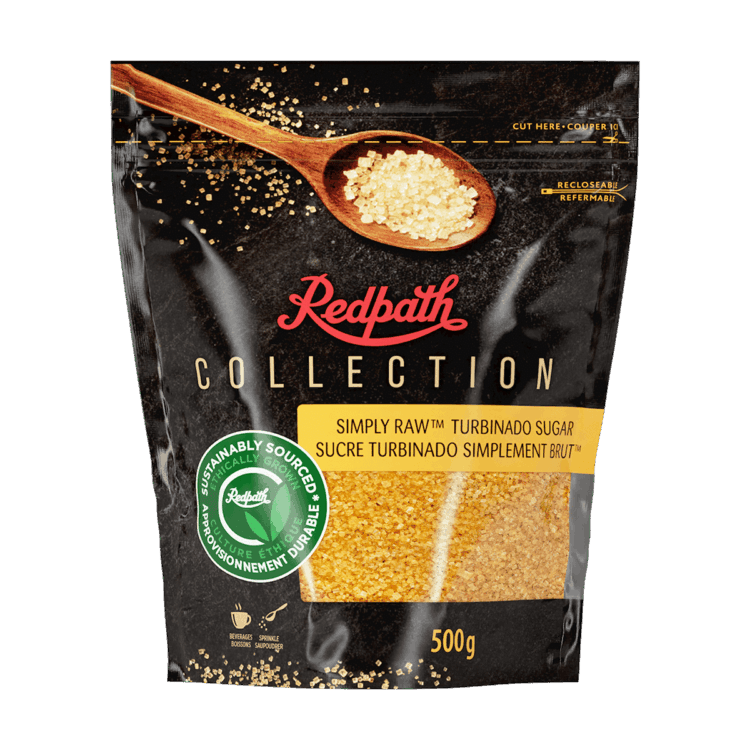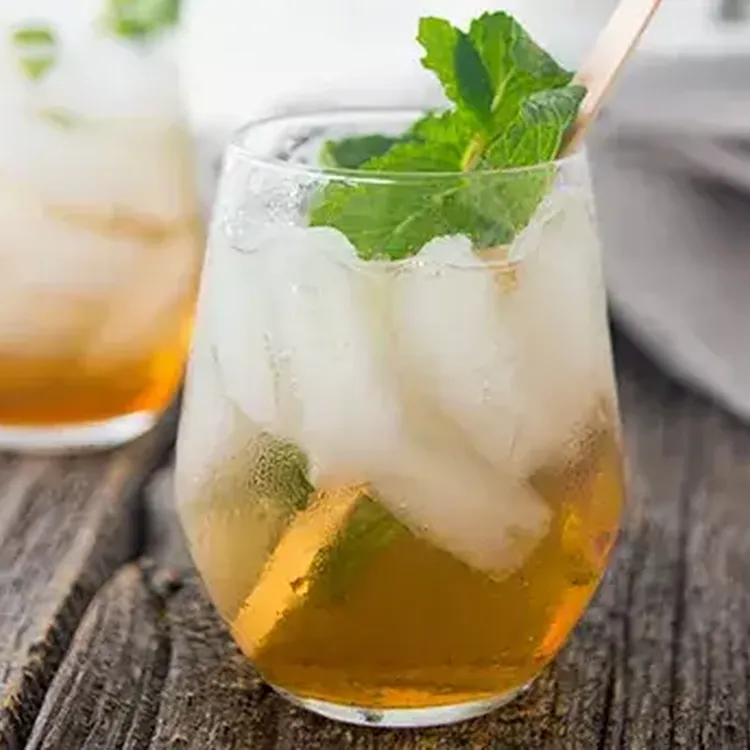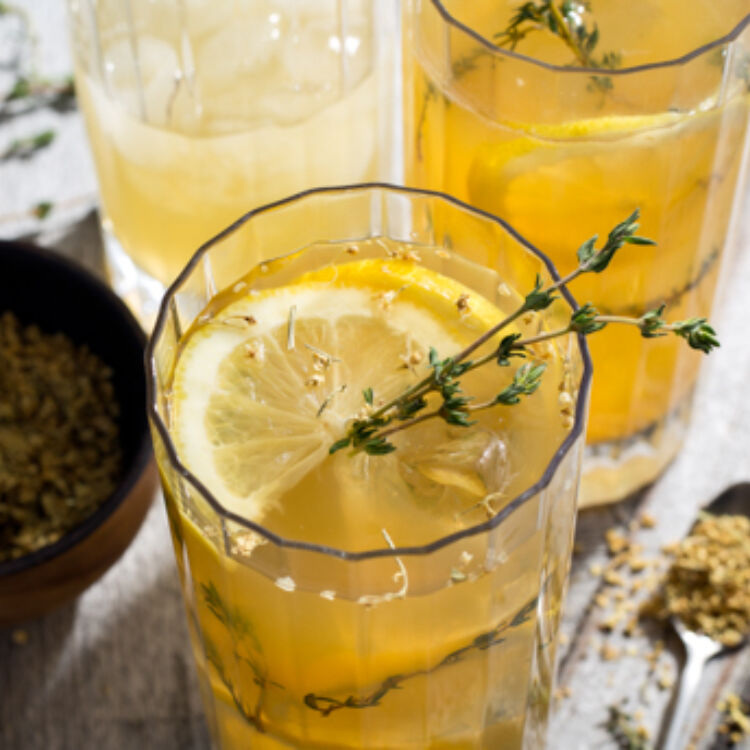Spiced Tepache
Back to Recipes & MoreInstructions
Step 1
Add the Redpath Simply Raw™ to the bottom of a large, sanitized or clean glass pitcher, or mason jar that can hold at least 3 quarts (12 cups) of liquid.
Step 2
Add 2 cups (500 ml) of water. Stir vigorously with a wooden spoon until dissolved.
Step 3
Add in the cinnamon sticks, sliced ginger, sliced turmeric, peppercorns, and cloves. Stir to combine.
Step 4
Thoroughly rinse the skin of the pineapple; do not use warm or hot water, as this may kill any of the natural yeast on the skin necessary to make this drink.
Step 5
If not using leftover pineapple scraps, use a chef’s knife to remove the top of the pineapple (if it is still attached); compost the leaves. Slice the bottom of the pineapple to create a stable base. Slice the skin off the pineapple, leaving about ¼- to ½-inch of flesh on the skin. Place all the skins into the container filled with the sugar mixture. If not consuming the fibrous core of the pineapple, this can also be roughly chopped and placed into the container along with the pineapple skins. (see Chef’s Tips).
Step 6
Slowly pour the remaining 8 cups (2000 ml) of water into the container, stirring to distribute the ingredients and further dissolve the sugar. With the wooden spoon, gently push the pineapple skins to the bottom of the container. Cut a piece of parchment to about the size of the surface of the liquid and place it there. Use a clean drinking glass or a small plate to keep all the ingredients fully submerged in the liquid; any bits exposed to the air will mould (see Chef’s Tips).
Step 7
Cover the opening of the container with a double layer of cheesecloth or a clean, lint-free kitchen towel secured with a rubber band or butcher’s twine. Place into a cool, preferably dark location, and let sit for 24 to 72 hours. Check every 12 hours, especially if your kitchen or resting spot is warm.
Step 8
At every check, use a clean spoon to skim off any foam on the surface of the liquid. After skimming the foam, use a clean spoon to taste the brew. If the resting spot is particularly warm, fermentation may happen within the first 12 to 24 hours. If the resting spot is cooler than room temperature, you may need the full 72 hours.
Step 9
Fermentation has occurred when the froth appears on the surface of the liquid. Do not ferment for too long, as it will eventually turn into vinegar.
Step 10
Once the brew taste is to your liking, line a sieve with the cheesecloth or kitchen towel used to cover the opening and strain the tepache into a large pitcher or container (see Chef’s Tips).
Step 11
Pour the tepache into airtight bottles, a glass container, or a beverage dispenser. Store in the fridge to prevent further fermentation.
Step 12
Serve over ice and garnish with pineapple slices (see Chef’s Tips).











